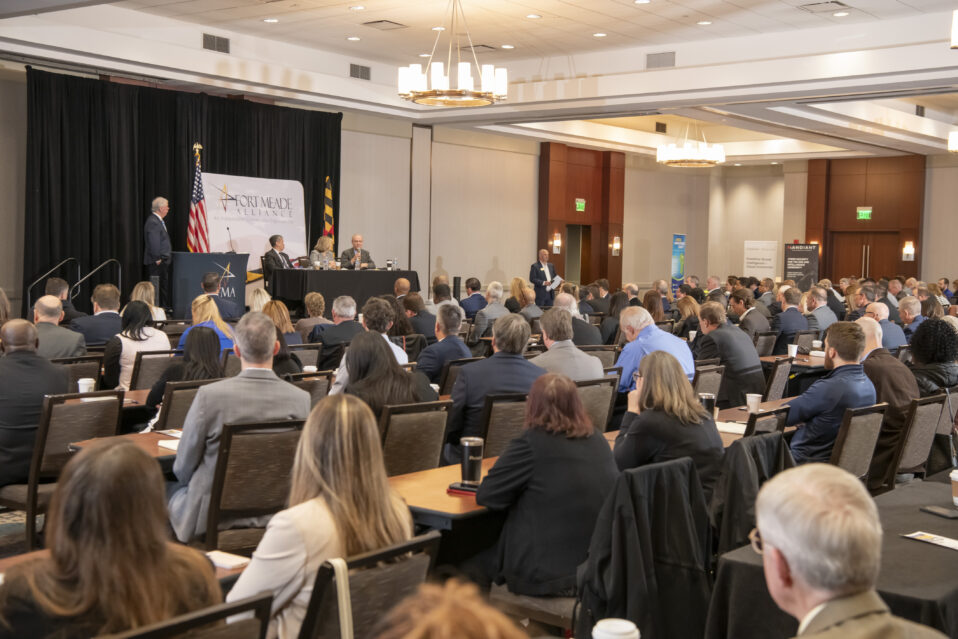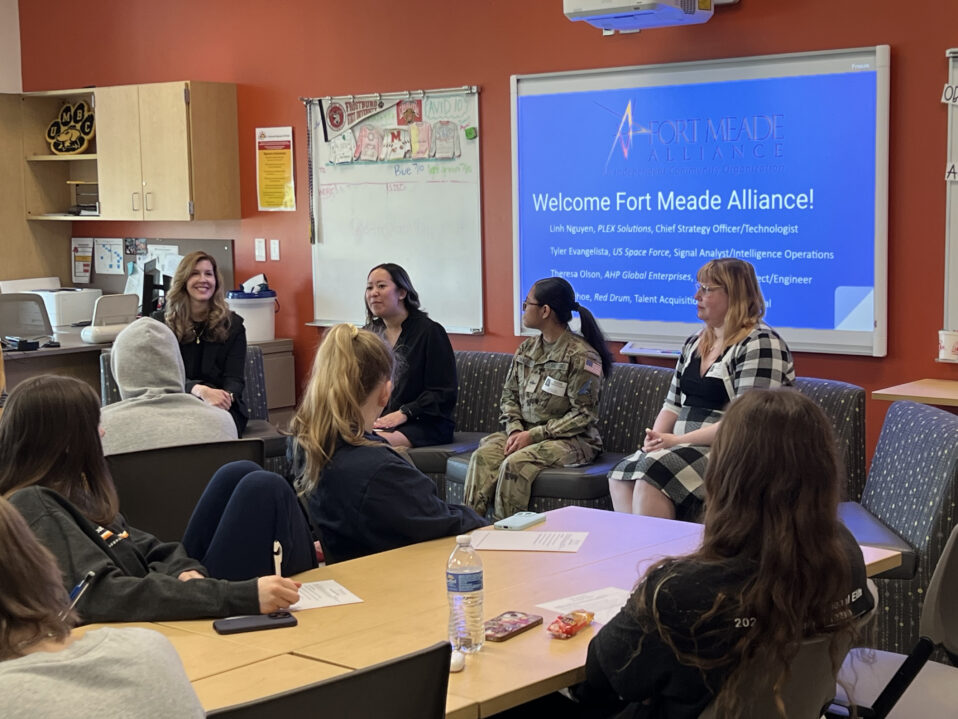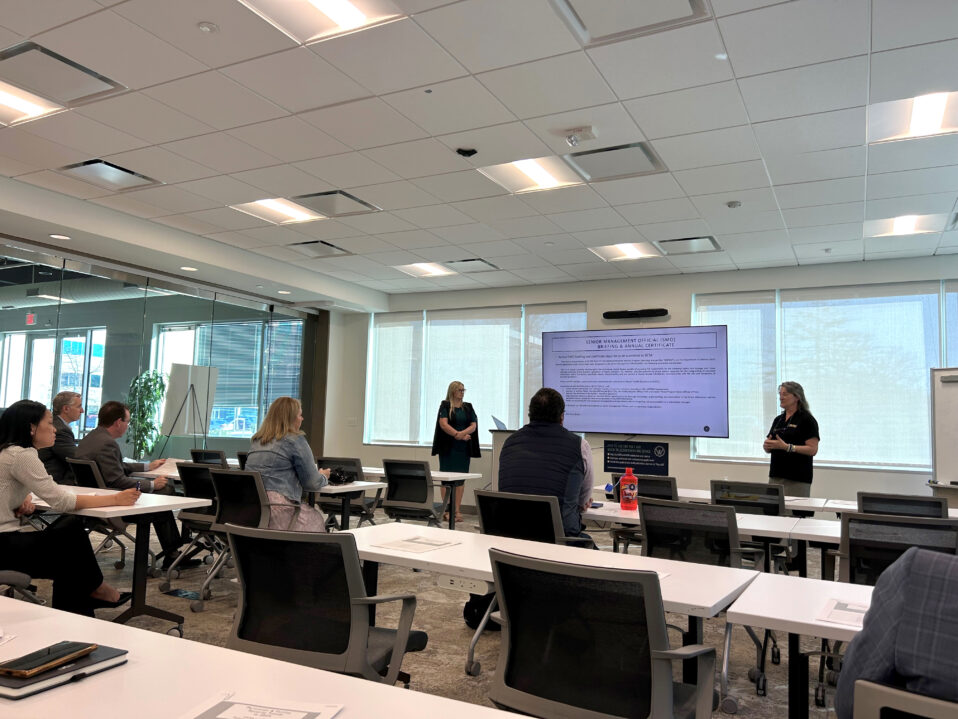The growing need for cybersecurity and information technology (CS/IT) professionals in homeland security, healthcare, finance, energy and numerous other sectors has saddled America’s K-12 education system with a profound challenge. Grade schools which only started to dabble in teaching computer science roughly 15 years ago, now need to provide a larger amount of IT education, more advanced classes and expand tech training throughout nearly all subject areas and grade levels.
When members of FMA’s Education and Workforce (E&WF) Steering Committee drafted a white paper on “Top Challenges in Acquiring CS/IT Talent in the Fort Meade Region,” they identified one of the primary challenges as “aligning K-12 education with cyber opportunities, expanding CS/IT education to all students and reaching outside traditional STEM programs.”
Many different efforts will be needed to address that challenge.
Grade schools “are the beginning of the pipeline of the STEMists of tomorrow,” said Maureen McMahon, Deputy Superintendent of Anne Arundel County Public Schools. “Professionals in math, computer science, engineering and data science all have to fall in love with those areas some time much earlier than their 20s. We are very interested in keeping that pipeline wide open, and really exciting and engaging students in the study of science, math and engineering at an early age.”
To accomplish that, teachers need training, information and industry support.
In the 2017-2018 school year, the U.S. Department of Education identified several “critical shortage areas” of STEM teachers in Maryland. Those included shortages of teachers in mathematics and science in grades 4 to 9, and shortages of teachers in technology education, computer science, mathematics and multiple science disciplines in grade 7 to 12. Public school systems are working to address those shortages both through new hires and providing professional development to current teachers.
Teachers, whether they teach STEM or other subjects, also need greater information about CS/IT in order to properly inform students about career opportunities.
“Our teachers don’t have to be experts in cyber to motivate the next group of cyber professionals, but they have to be knowledgeable enough to tell stories,” McMahon said. Teachers need to be familiar with the range of careers that involve CS/IT and “they need to learn the story of the behind the scenes work, whether that is risk tolerance, software analysis, data analytics or languages.”
Furthermore, that knowledge needs to be conveyed to teachers in all disciplines so that the Spanish teacher can show a student how their enthusiasm for learning languages could relate to a CS/IT career, or a music teacher could enlighten her students of a career option that may not be obvious, but is well established.
“So many of our STEM professionals are musicians. It’s off the scale the number of Nobel Laureates in STEM disciplines who had formal music training as children,” McMahon said.
CS/IT education, the E&WF Steering Committee found, also needs to expand beyond STEM classes and become components of classes in a wide variety of subjects and throughout all grade levels.
Joseph DeSilva, Signature Program Facilitator of the Information Management program at Chesapeake High School, raises the example of Power Point. Fifteen years ago, students would only learn about Power Point if they took a Microsoft Office class. Gradually, teachers and students began using Power Point to deliver presentations in a variety of classes.
“Power Point now is the standard for doing a class presentation,” De Silva said. “So why not build on that? Why not also have students do some scratch coding so they are able to code a project or demonstration or simulation rather than just talking about it on a Power Point slide?”
Similarly, students across all disciplines need to learn core digital tools – such as Microsoft Office, Google Suite and Adobe – in order to communicate effectively and prepare for a wide range of careers. “People who have those abilities, get the better paying jobs,” DeSilva said. “If we don’t equip students with those tools, then we are doing them a big disservice.”
All students, he added, also need to learn about “digital citizenship” – how to conduct themselves online, protect their privacy and security.
In the “Top Challenges in Acquiring CS/IT Talent” paper, FMA commits to partnering with local school systems to help expand the CS/IT education initiatives, such as STEM Core and STEM Core Bridges, and the cyber range at Meade High School.
A full copy of the white paper is available here. Future issues of the FMA newsletter will also include coverage of specific challenges identified by the E&WF Steering Committee.




